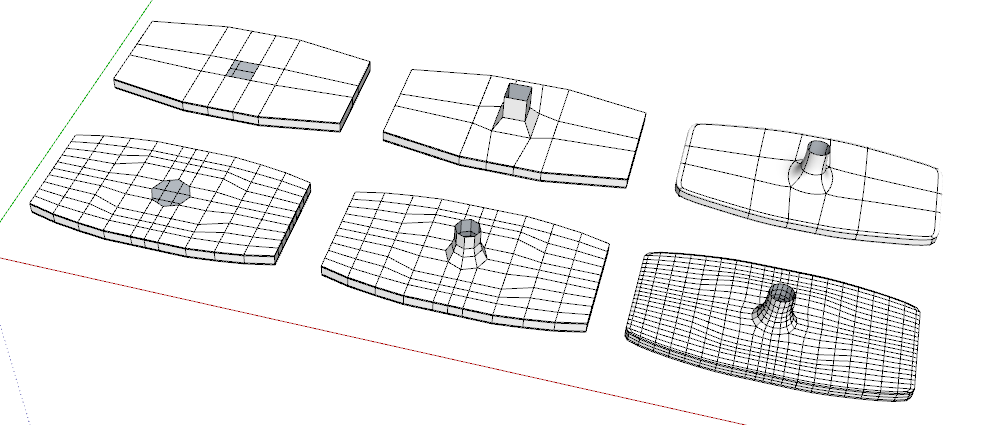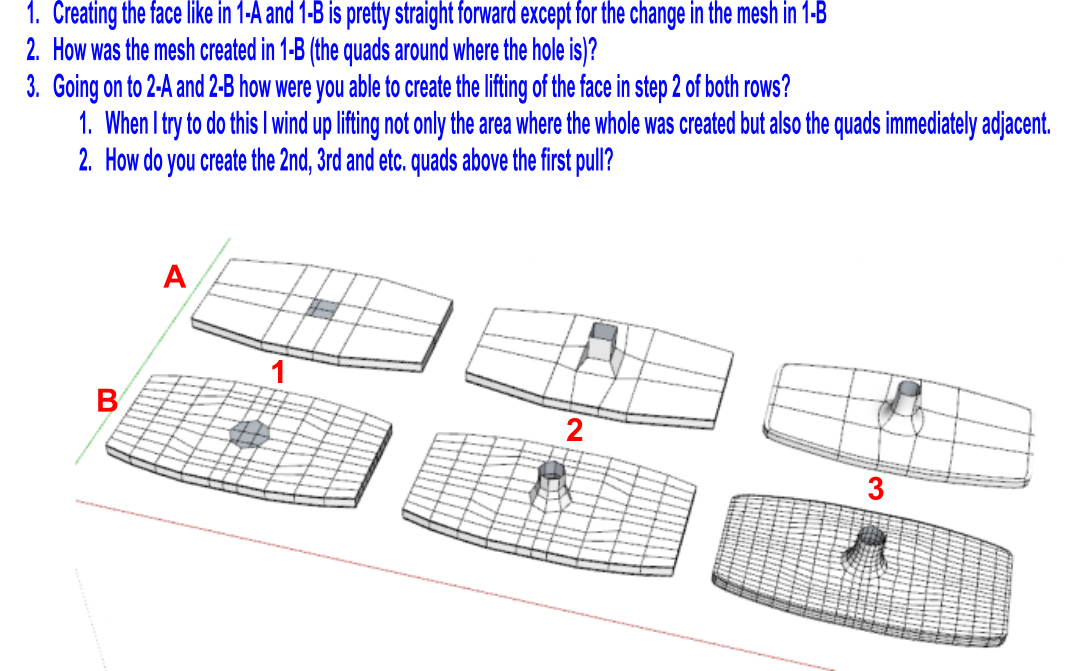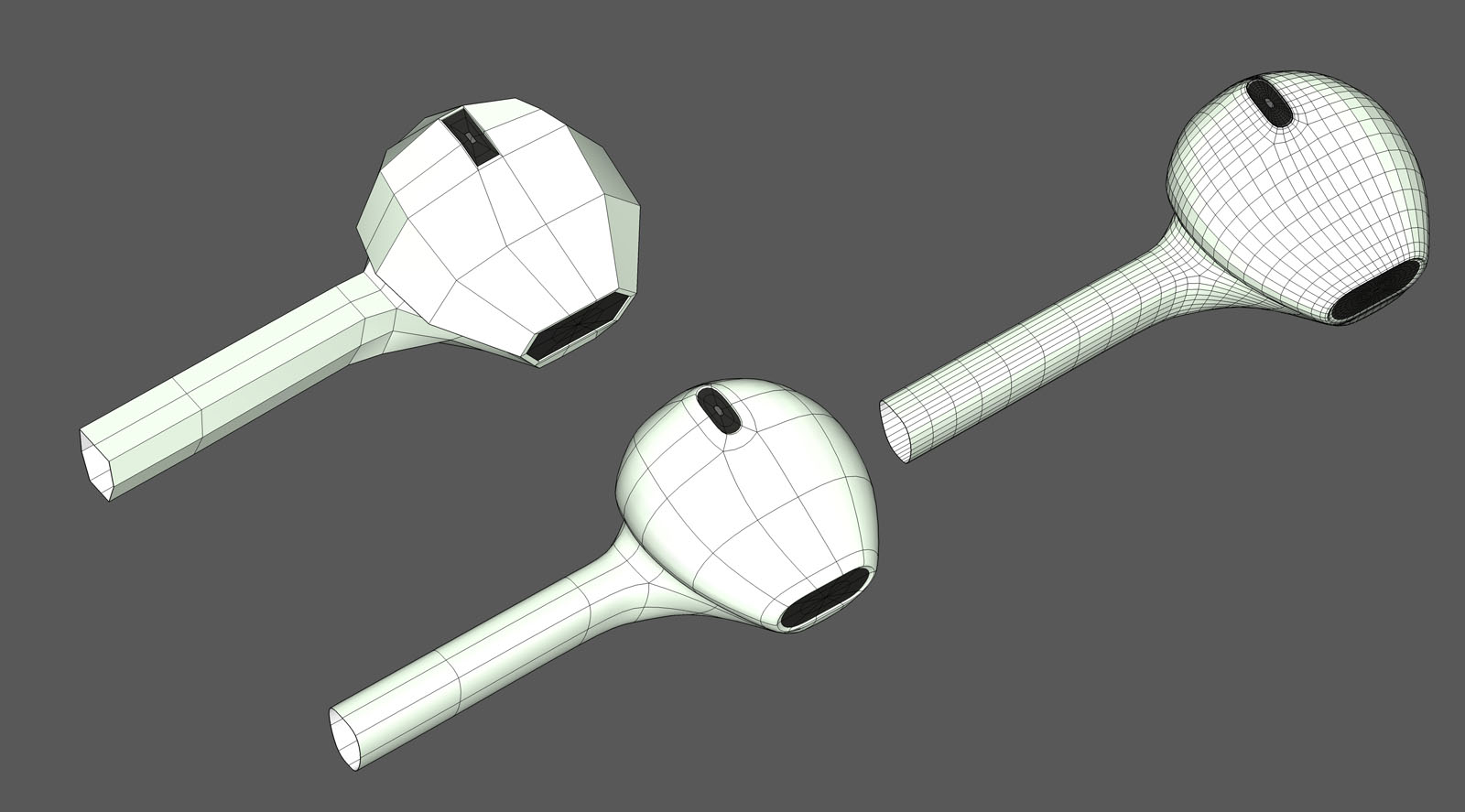SubD examples and models
-
OK - a silly example but after all of my notes trying to get things working like @Box showed, here is something to let you know I am getting there.
Thanks to all of you that got me going on the right path......stick around, I will probably come up with something else. Just wanted to let you all know that I am making some progress.





-
numerobis was absolutely right about split tools Dave, and if you scrolled down from that gif to the next one where I answered you about the curves, You will see I showed you split tools there.
-
@box said:
numerobis was absolutely right about split tools Dave, and if you scrolled down from that gif to the next one where I answered you about the curves, You will see I showed you split tools there.
Yes, I see that now. I just forgot it. I was looking at the Funnel gif and it did not show and I did not properly put the two together.
Now going back to the referenced video (the curves one), I see that you used another plugin that I think is CadFather's Soften/Unsoften to divide all of the selected surfaces into quads. Is that another tool that you recommend?
Please be patient with me. It is finally starting to sink in. This stuff is a pretty different from the type of modeling I have been doing but I can see where it can pay off and definitely is something all of us should learn.
-
@Box - your patience is paying off for me. Here is my latest endeavor in trying to learn how to do some quad modeling.
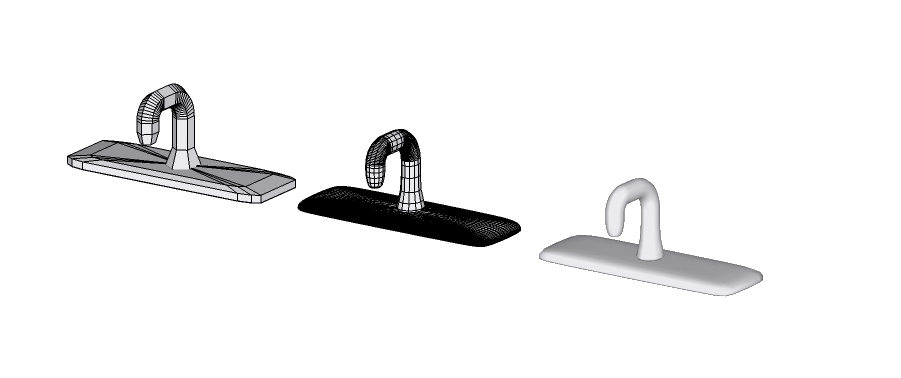
This is actually two pieces. The faucet is a separate component from the base. I tried drawing the two pieces as a single object but could not get it to come out right.
Any advice?
One concern I have with all of this is the file size. This drawing is a little over 9Mb. If I wanted to include it in a kitchen or bathroom along with some other stuff then you could wind up with some huge files. Is this normal?
-
@ntxdave said:
One concern I have with all of this is the file size. This drawing is a little over 9Mb. If I wanted to include it in a kitchen or bathroom along with some other stuff then you could wind up with some huge files. Is this normal?
It's relatively normal and Sketchup seems to handle things very well these days.
I'll use SubD for various models in a scene, including multiple taps/faucets and various other elements - many of which may have quite complex geometry for the control mesh.
Here's a moderately detailed example:
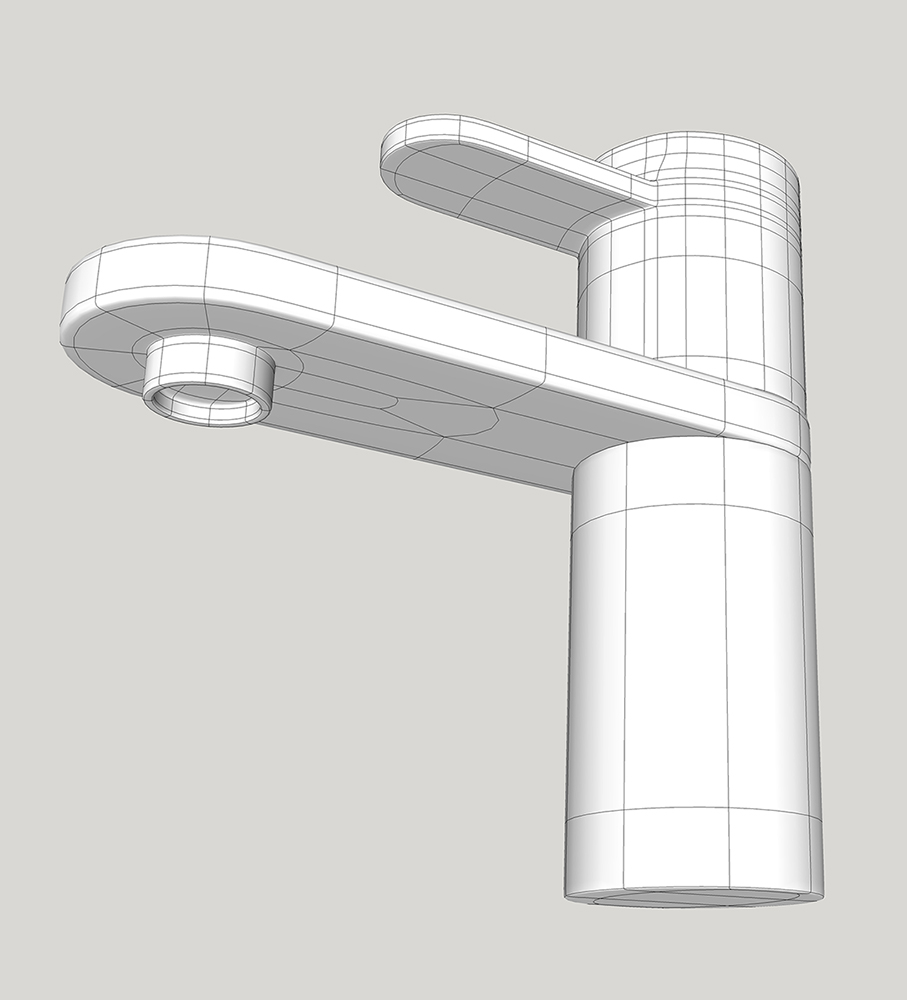
-
@ntxdave said:
... I tried drawing the two pieces as a single object but could not get it to come out right... Any advice? ...
Hi Dave - this could be, what you are looking for (I have no idea what it is
 )
)
On page 9 of this topic, Thomthom is showing a view examples how to cut out (Quad-)holes.
-
@hornoxx said:
Hi Dave - this could be, what you are looking for (I have no idea what it is
 )
)
On page 9 of this topic, Thomthom is showing a view examples how to cut out (Quad-)holes.Will that is what I had tried to do but obviously did something wrong. Will look at it some more. Thanks for sharing the skp file.
@Hieru Thanks for sharing yours and the feedback as well.
Some day, I am going to learn


-
I think you can get away with even fewer polygons in your control-mesh. I had a quick playaround where I stripped away some of the loops:
-
@thomthom said:
I think you can get away with even fewer polygons in your control-mesh. I had a quick playaround where I stripped away some of the loops:
Again, thanks for sharing. And I will look at this closer again. I had tried this but not sure what the heck I did wrong. All part of the learning process.
I am glad that people are so willing to share and will put up with all of these questions from someone like me. I REALLY appreciate it.
-
-
-
Hi Dave
most of this particular model is done in Basic SketchUp as shown in the added video.
So the lines around the hole (your question 2) were simply moved or drawn with
native SU-tools in this case - there was no magic stick
The mesh change 1B (your question 1) I just did to hit the edges of the octagon-hole
perfectly in order to just get quads.
For lifting the 4 lines I used Vertex Tools. If you hold CTRL, the lifting of the
Vertex Tool gizmo will create a new "tube" section. If you don´t have Vertex Tools,
you can do all this with basic SU-tools as well but it is important to avoid any internal
faces. Also the scaling can be done with basic SU-tools as well. But using Vertex Tools
for scaling, rotating, moving ... is much better in order do get a "clean" Quad mesh...
Also Quadface Tools are important if you want or need to "divide" your model in certain
sections or if you want to add, select or edit loops without doing all that manually...
I am far from understanding all that and am just starting to discover these functions by
testing and playing
-
-
@unknownuser said:
you could wind up with some huge files. Is this normal?
Yep! Basically SKetshup is a "box modeling" program, not a "Subdivision" program!
It's was not provided for that!
We are lucky that works for some little objects, but that will be very difficult for biggest project!
Manage millions of polygons is not its speciality!
-
@pilou said:
@unknownuser said:
you could wind up with some huge files. Is this normal?
Yep! Basically SKetshup is a "box modeling" program, not a "Subdivision" program!
It's was not provided for that!
We are lucky that works for some little objects, but that will be very difficult for biggest project!
Manage millions of polygons is not its speciality!
If they're working with render engines and if you have Thea Interactive Rendering capabilities, you'll be able to fire up a render with subdivision without Sketchup Open GL viewport even being aware of it!
Then it will be fast even for millions of polys, if you have enough power in your CPU+GPU combo, it will actually be a zip!
-
Yes thanks to Proxies!

-
@HornOxx Thanks a ton. I see what I did wrong. I thought I had used the Ctrl when using the Gizmo tool but I must not have.
I tried selecting the grids at both end and scaling at the same time but for some reason it would not do it. I was able to do it by scaling one end at a time.
I wish the ConnetEdges tool that is part of the QFT tool would give you a little better control over the division (like being able to split the selected surface evenly) but I also know that you can use the move tool to position the rings/loops so there is more than one way to get the job done. I also like the way you went into wire frame mode and used guide lines to drag the ring/loops. That was pretty neat also.
Ultimately, I would like to be able to put together a beginners guide to quad face modeling.
Here are the sections I would like to see:
-
What is Quad Modeling
-
Why is it necessary/Why would you want to use it
-
Step by step example
-
This would be a step by step guide with pictures that showed each step with an explanation of why you are performing it* I think a written guide might work better than a video but maybe some animated gifs because the newbie needs to understand both how and why you are performing the step* The sample model needs to be comprehensive enough to see all (or at least most) of the features yet not so complicated that the beginner cannot understand what is being done
-
Glossary
-
Poly* Quad* Tri* N-Gon* Other Terms
Just some current thoughts - a long way off though.
-
-
-
-
@ntxdave said:
What are Proxies?
The Proxy in this context is the simple raw geometry.
Also for example Artisan uses this term - also there is a simple raw geometry (the proxy)
which then gets subdivided in a much complexer and biger geometry. The Proxy allways is the
"placeholder"(? don´t know if that word exists in English?) for something modified.
A lot of Render tools replace simple Proxys with most complex replace-geometrys or components.
So you can draw (or use) for example a simple line-box in SU, wich then gets replaces within a renderer by a most complex 3D-tree...
Advertisement

